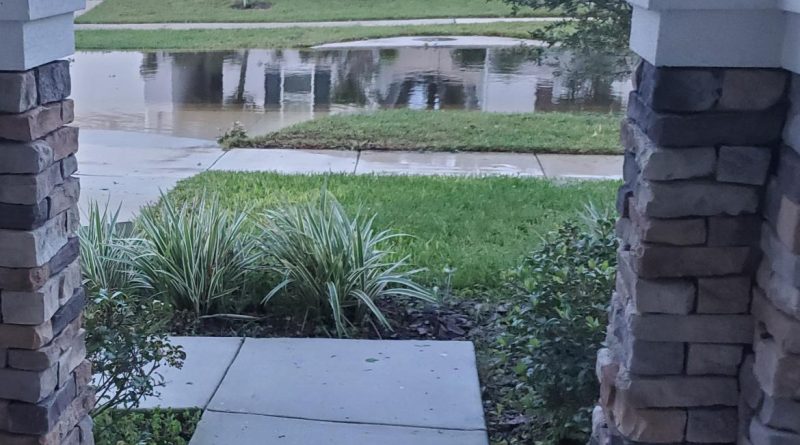Florida’s recovery from back-to-back Hurricanes
Hurricane Milton made landfall near Siesta Key, FL on Oct. 9 as a Category 3 storm.
By Michaela Ely
Not even a month after Hurricane Helene devastated Northern Florida, Hurricane Milton made landfall near Siesta Key, FL on the west side of the state as a Category 3 storm on Oct. 9. Originally projected to be a Category 5 storm by the National Oceanic and Atmospheric Association (NOAA).
It struck the majority of Florida with a death toll that currently sits at 24 people.
Hurricane Milton caused over 3 million residents to lose power and caused flooding throughout the western part of the state, though it was mostly concentrated in areas closest to the coast. While the storm wasn’t a Category 5, it caused plenty of destruction. The impact seems to have been less than Hurricane Helene was on the state of Florida.
“While my family was very fortunate, we did not receive major flood damages, the small pond within the center of my neighborhood which flooded into a lake has yet to recede back to normal levels. The pond did flood just high enough to reach the fence line of my property.?Other homes were not so fortunate as many houses in surrounding neighborhoods were flooded and roads made inaccessible to residents due to rising water levels,” Florida resident and UWT Alumni of 2022 Gabby Nunez tells The Ledger.

Hurricane Milton was the second hurricane to hit this fall, with Hurricane Helene making landfall in the Big Bend region of Florida and the Carolinas on Sept. 26, not even two weeks apart. Helene was a Category 4 storm that resulted in the highest death toll since Hurricane Katrina in 2005, with 224 people confirmed to be deceased across the 6 states impacted, according to USA Today.
Videos of Helene went viral on TikTok as it traveled further inland than expected, destroying vital infrastructure in the Carolinas, especially up in the mountains near Asheville and Chimney Rock.
When it hit Perry, FL, the excessive rainfall pushed local rivers either above or near to their major flooding stages, according to the North Carolina State Climate Office. Historic flooding destroyed homes, businesses and infrastructure, including the Kisner Bridge on Highway 107 in Afton, TN. Highway 107 is one of the only roads leading to the mountains in North Carolina.
“The worst hurricane that has happened in my lifetime was hurricane Irma, which hit in 2017. It was a Category 4 and flooded my whole street, schools were closed for almost a month. With that being said, Milton was stronger, faster and larger. If I were in the path of the hurricane, I am sure that would easily top Irma. The only flooding was in my parking lot of my apartment complex. Luckily, I stayed in Naples during the hurricane, so my car did not have any damage,” Florida resident Ryan Letourneau told The Ledger.
In an interview with The Ledger, Letourneau made note of the excessive heat seen in the state, the back-to-back storms and increasing red tides. Algae blooms are caused by rising temperatures and have impacts on both humans and wildlife and are directly linked to climate change, according to the Florida Harmful Algal Bloom Task Force.
Dr. Cheryl Greengrove, a professor of geoscience at UWT and oceanographer explains that climate change has been evident in the Puget Sound as well. Dr. Greengrove cites the marine heat wave that hit in 2014 and reoccurred in 2019. It left many scientists like Dr. Greengrove confused and believing that their instruments were malfunctioning, as the Puget Sound’s temperature increased between two to four degrees Celsius.
“We’ve never seen this before, and it was caused by very warm water in the North Pacific, the fact that the jet stream had moved further north, it wasn’t mixing colder water into that upper layer. It got quite warm, and then that warm water basically upwelled into Puget Sound, which it normally does. That water usually comes in and we flush Puget Sound periodically, but it was way warmer than usual, so all of Puget Sound instantly became warmer,” Dr. Greengrove said.
Dr. Greengrove states that it changes the ecosystem and habitats, resulting in invasive species of warmer waters entering the Puget Sound, negatively impacting native species.
Another visible impact of climate change is the shifting of climate belts. For example, a study published by the Yale School of the Environment explains how the tropics have grown 30 miles each decade since beginning measurement in the late 1970s. Tornado Alley has also shifted about 500 miles east over the past 30 years. These shifts can have devastating impacts on ecosystems and agriculture.
“So, climate belts are going to shift, which are going to shift growing patterns. You’re going to have shifts like you’re seeing where weather patterns move. It’s going to move, for instance, the jet stream, which tears the storms in the northern hemisphere, which affect North America, for instance,” Dr. Greengrove said. “For instance, you know, where we have great, great ability to grow crops, in the Midwest, here in the United States, because the great soil that those temperatures are eventually going to shift up to Canada. Does Canada have the same you know, quality soil we have? Not necessarily.”
For those seeking to aid survivors of Hurricane Milton and Helene, you can make a donation to the Florida Disaster Fund or the American Red Cross. You can also donate to a local organization in Florida, Feeding Tampa Bay.



